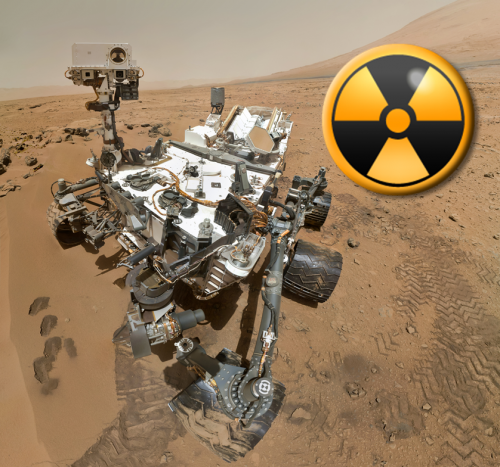
Mars might be further out of reach than we previously thought. This stems from recent findings made by the Mars Science Laboratory (MSL) rover Curiosity’s Radiation Assessment Detector (RAD). The announcement about this recent discovery was made today during a telecom held at NASA Headquarters in Washington D.C. at 2:30 p.m. EDT. The instrument has detected radiation levels above those determined safe for crews.
Initial indications point to radiation levels which exceed the career limit NASA allows astronauts to be exposed to. These high levels were detected by Curiosity as it was traveling to the Red Planet. NASA has stated it is looking at reducing the amount of time astronauts are exposed to radiation during the journey to Mars. New propulsion systems are being considered as a means to help assist with this. NASA is also researching a variety of methods to shield crews from radiation both in space and on the surface of other worlds.
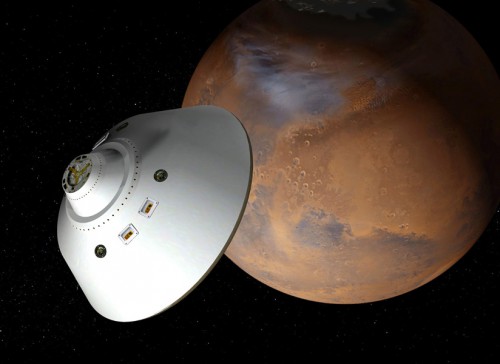
According to NASA, RAD is the first instrument to measure radiation during the cruise phase from Earth to Mars. During today’s teleconference, the amount of radiation that a potential crewed mission to Mars would face was detailed by scientists managing the RAD experiment.
“In terms of accumulated dose, it’s like getting a whole-body CT scan once every five or six days,” said Cary Zeitlin, who is the lead author of the paper, published in the journal Science, about the findings. “Understanding the radiation environment inside a spacecraft carrying humans to Mars or other deep space destinations is critical for planning future crewed missions.”
Radiation exposure is measured by units known as “Sieverts” (Sv) or milliSieverts (one one-thousandth of a full Sievert). The more Sieverts a person is exposed to, the greater the likelihood they will develop cancer. According to NASA, exposure to 1 Sv over time increases the chance one will develop cancer by 5 percent.
Rather than express concerns that this new information dampens plans to send crews to the surface of the Red Planet, NASA officials stated that the data more or less confirms Apollo-era data. In essence, Curiosity, encapsulated in its aeroshell, served as a test flight for future manned missions.
Scientists will now go about working to try and counter the increased risk experienced by crews during the cruise phase as well as during time spent on the Martian surface.
“As this nation strives to reach an asteroid and Mars in our lifetimes, we’re working to solve every puzzle nature poses to keep astronauts safe so they can explore the unknown and return home,” said NASA Associate Administrator for Human Exploration and Operations William Gerstenmaier in a release issued by the space agency. “We learn more about the human body’s ability to adapt to space every day aboard the International Space Station. As we build the Orion spacecraft and Space Launch System rocket to carry and shelter us in deep space, we’ll continue to make the advances we need in life sciences to reduce risks for our explorers. Curiosity’s RAD instrument is giving us critical data we need so that we humans, like the rover, can dare mighty things to reach the Red Planet.”
The Mars Science Laboratory’s findings will be published in the May 31 edition of the journal Science.
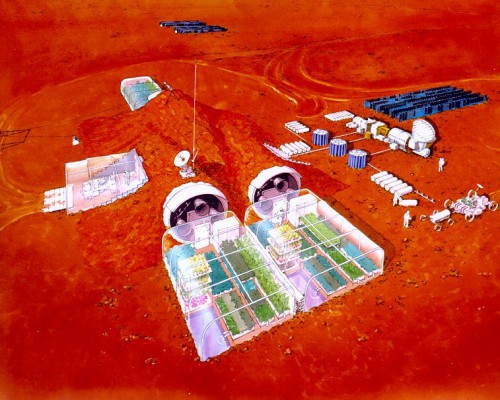
There are two different types of radiation that pose a threat to astronauts traveling to different deep space destinations. The first is what is known as galactic cosmic rays, or “GCRs.” These come from high-energy events outside of our solar system (such as supernova explosions). The other form of hazardous radiation comes from a much closer source: our Sun. This is known as solar energetic particles, or “SEPs,” and originate from coronal mass ejections and solar flares.
Shielding that NASA currently uses on its spacecraft does a good job of protecting against SEPs—but not so well against GCRs. NASA is looking into a variety of ways to mitigate the threat posed by radiation. One concept is to employ advanced propulsion concepts to limit the travel time between Earth and Mars. While on the surface of Mars, astronauts would construct structures using what are known as “in-situ” resources. These are materials found at their destination. One example of this would have crew cover their structures with Martian soil, which would in-turn block some of the radiation.
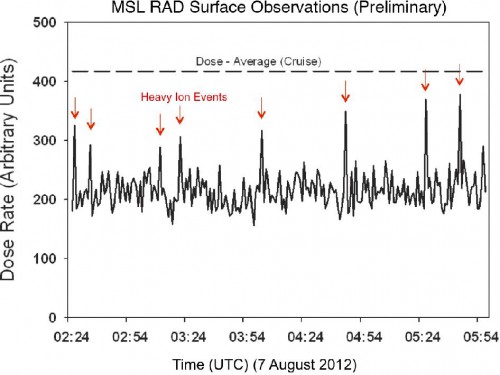
“Scientists need to validate theories and models with actual measurements, which RAD is now providing,” said Donald M. Hassler, the principal investigator of the RAD experiment. “These measurements will be used to better understand how radiation travels through deep space and how it is affected and changed by the spacecraft structure itself. The spacecraft protects somewhat against lower energy particles, but others can propagate through the structure unchanged or break down into secondary particles.”
Curiosity was launched atop a United Launch Alliance Atlas V rocket in November 2011. The one-ton rover touched down on the surface of the Red Planet last August (2012). Since arriving at Gale Crater on Mars, the rover has made a number of discoveries that have expanded our understanding of Mars. The rover’s primary mission is to determine if, sometime in the planet’s past or present, the conditions ever existed to support microbial life. Curiosity is the largest rover ever sent to Mars, is about the size of a compact car, and has a primary mission scheduled to last two years.
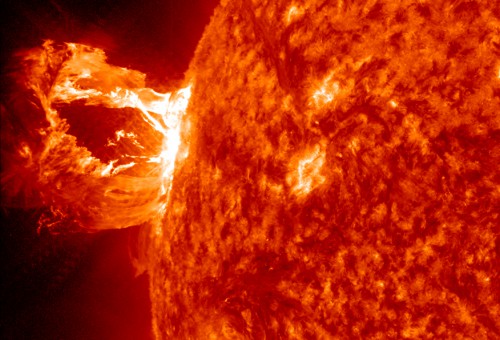
Want to keep up-to-date with all things space? Be sure to “Like” AmericaSpace on Facebook and follow us on Twitter: @AmericaSpace




Interesting find. It is quite obvious that more research needs to be done to protect a crew before a manned flight is possible. But the obstacles will be overcome. This is yet another example of how space exploration triggers new understandings and promotes advances in technology that will ultimately benefit us here on Earth.
100 mSv per year is otherwise known as no cancer risk. The MSL measured 1.8 mSv per day. So for 6 – 8 mo. journey that would be 324 to 432 mSv for the entire trip. If they got the whole trips dose in one minute they would show no signs of radiation poisoning below 400 mSv.
To mitigate this issue… send non smokers.
“To mitigate this issue… send non smokers.”
Bummer, this means that I can’t go? 🙂
Of course you can go if we assume informed consent.
Would using sheets of magnets covering the capsule help any?
The kind you use on your frige.